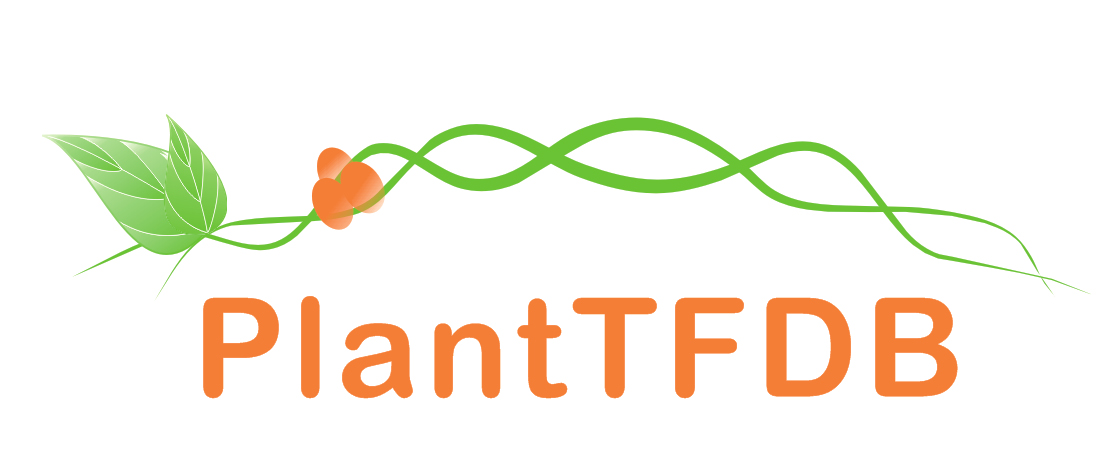 |
PlantRegMap/PlantTFDB v5.0
Plant Transcription
Factor Database
|
| Home TFext BLAST Prediction Download Help About Links PlantRegMap |
Transcription Factor Information
| Basic Information? help Back to Top | |||||||||
|---|---|---|---|---|---|---|---|---|---|
| TF ID | XP_016482630.1 | ||||||||
| Organism | |||||||||
| Taxonomic ID | |||||||||
| Taxonomic Lineage |
cellular organisms; Eukaryota; Viridiplantae; Streptophyta; Streptophytina; Embryophyta; Tracheophyta; Euphyllophyta; Spermatophyta; Magnoliophyta; Mesangiospermae; eudicotyledons; Gunneridae; Pentapetalae; asterids; lamiids; Solanales; Solanaceae; Nicotianoideae; Nicotianeae; Nicotiana
|
||||||||
| Family | AP2 | ||||||||
| Protein Properties | Length: 492aa MW: 55066.3 Da PI: 6.1482 | ||||||||
| Description | AP2 family protein | ||||||||
| Gene Model |
|
||||||||
| Signature Domain? help Back to Top | |||||||
|---|---|---|---|---|---|---|---|
| No. | Domain | Score | E-value | Start | End | HMM Start | HMM End |
| 1 | AP2 | 53.7 | 5.3e-17 | 155 | 204 | 1 | 55 |
AP2 1 sgykGVrwdkkrgrWvAeIrdpsengkr.krfslgkfgtaeeAakaaiaarkkleg 55
s+y+GV++++++grW+++I+d + k+++lg f+ta Aa+a+++a+ +++g
XP_016482630.1 155 SQYRGVTFYRRTGRWESHIWD------CgKQVYLGGFDTAHAAARAYDRAAIEFRG 204
78*******************......55***********************9997 PP
| |||||||
| 2 | AP2 | 41.9 | 2.6e-13 | 247 | 294 | 1 | 52 |
AP2 1 sgykGVrwdkkrgrWvAeIrdpsengkrkrfslgkfgtaeeAakaaiaarkk 52
s+y+GV+ +k grW+A+ + +k+++lg f+t+ eAa+a+++a+ k
XP_016482630.1 247 SKYRGVTLHK-CGRWEARMGQF--L-GKKYVYLGLFDTEVEAARAYDKAAIK 294
89********.7******5553..2.26**********99*********987 PP
| |||||||
| Protein Features ? help Back to Top | ||||||
|---|---|---|---|---|---|---|
| Database | Entry ID | E-value | Start | End | InterPro ID | Description |
| Pfam | PF00847 | 4.4E-9 | 155 | 204 | IPR001471 | AP2/ERF domain |
| SuperFamily | SSF54171 | 1.5E-15 | 155 | 213 | IPR016177 | DNA-binding domain |
| SMART | SM00380 | 1.2E-30 | 156 | 218 | IPR001471 | AP2/ERF domain |
| Gene3D | G3DSA:3.30.730.10 | 5.8E-17 | 156 | 212 | IPR001471 | AP2/ERF domain |
| PROSITE profile | PS51032 | 17.517 | 156 | 212 | IPR001471 | AP2/ERF domain |
| CDD | cd00018 | 8.29E-11 | 156 | 211 | No hit | No description |
| Pfam | PF00847 | 8.0E-9 | 247 | 294 | IPR001471 | AP2/ERF domain |
| CDD | cd00018 | 2.53E-24 | 247 | 304 | No hit | No description |
| SuperFamily | SSF54171 | 9.15E-17 | 247 | 306 | IPR016177 | DNA-binding domain |
| SMART | SM00380 | 1.7E-28 | 248 | 311 | IPR001471 | AP2/ERF domain |
| PROSITE profile | PS51032 | 15.567 | 248 | 305 | IPR001471 | AP2/ERF domain |
| Gene3D | G3DSA:3.30.730.10 | 4.7E-16 | 248 | 305 | IPR001471 | AP2/ERF domain |
| PRINTS | PR00367 | 2.4E-5 | 249 | 260 | IPR001471 | AP2/ERF domain |
| PRINTS | PR00367 | 2.4E-5 | 287 | 307 | IPR001471 | AP2/ERF domain |
| Gene Ontology ? help Back to Top | ||||||
|---|---|---|---|---|---|---|
| GO Term | GO Category | GO Description | ||||
| GO:0006355 | Biological Process | regulation of transcription, DNA-templated | ||||
| GO:0010073 | Biological Process | meristem maintenance | ||||
| GO:0010093 | Biological Process | specification of floral organ identity | ||||
| GO:0048316 | Biological Process | seed development | ||||
| GO:0048481 | Biological Process | plant ovule development | ||||
| GO:0005634 | Cellular Component | nucleus | ||||
| GO:0003677 | Molecular Function | DNA binding | ||||
| GO:0003700 | Molecular Function | transcription factor activity, sequence-specific DNA binding | ||||
| Sequence ? help Back to Top |
|---|
| Protein Sequence Length: 492 aa Download sequence Send to blast |
MWNLNDSPNR RMEDESEEGC SSPIELDEKG KRVGSVPNSS SSALVIEEGN NSEEEENGEK 60 GKKKRNTPSK IFGFSVNDNN FSSESETPVT RQFFPVDESE MGGGSINFPT AQWAGVQFCQ 120 SEPRGTTIVG NPTEVSQQQQ QPIKKSRRGP RSRSSQYRGV TFYRRTGRWE SHIWDCGKQV 180 YLGGFDTAHA AARAYDRAAI EFRGVEADIN FNLEDYEADL KQMTNLTKEE FVHVLRRQST 240 GSPRGSSKYR GVTLHKCGRW EARMGQFLGK KYVYLGLFDT EVEAARAYDK AAIKSNGKDA 300 VTNFNRRIYE NELNSTESAD NAADHNLDLS LGGSNSKERS RDMGDNRGQN SSSLQLDAPW 360 QHQESRSKLT SPIGFDAQRR DGYNETETLQ LLSQTHLNSP GFLQPNINEM QRIGQFIRYG 420 ESHMVQVFPP QFSSYQIQSP SSSNVGRIGG TNSQEWYPNN IPPQIFATAA ASSGFPQQIE 480 SIGSDFKSLN TN |
| Functional Description ? help Back to Top | ||||||
|---|---|---|---|---|---|---|
| Source | Description | |||||
| UniProt | Probable transcriptional activator that promotes early floral meristem identity (PubMed:7919989). Is required subsequently for the transition of an inflorescence meristem into a floral meristem (PubMed:1675158). Plays a central role in the specification of floral identity, particularly for the normal development of sepals and petals in the wild-type flower, by spatially controlling the expression domains of multiple floral organ identity genes (PubMed:1675158, PubMed:23034631). Acts as A class cadastral protein by repressing the C class floral homeotic gene AGAMOUS in association with other repressors like LEUNIG and SEUSS (PubMed:1675158). Directly represses AGAMOUS by recruiting the transcriptional corepressor TOPLESS and the histone deacetylase HDA19 (PubMed:23034631). It is also required during seed development (PubMed:1675158). {ECO:0000269|PubMed:1675158, ECO:0000269|PubMed:23034631, ECO:0000269|PubMed:7919989}. | |||||
| Regulation -- Description ? help Back to Top | ||||||
|---|---|---|---|---|---|---|
| Source | Description | |||||
| UniProt | INDUCTION: Negatively regulated by the C class floral homeotic protein AGAMOUS in stamens and carpels. MicroRNA 172 (miRNA172) negatively regulates APETALA2 at the translational level and may modulate its expression pattern. Seems not to be influenced by jasmonate and Alternaria brassicicola. {ECO:0000269|PubMed:12805630, ECO:0000269|PubMed:12893888, ECO:0000269|PubMed:14555699}. | |||||
| Regulation -- PlantRegMap ? help Back to Top | ||||||
|---|---|---|---|---|---|---|
| Source | Upstream Regulator | Target Gene | ||||
| PlantRegMap | Retrieve | - | ||||
| Annotation -- Nucleotide ? help Back to Top | ||||||
|---|---|---|---|---|---|---|
| Source | Hit ID | E-value | Description | |||
| GenBank | EU677382 | 0.0 | EU677382.1 Solanum lycopersicum APETALA2-like protein mRNA, complete cds. | |||
| Annotation -- Protein ? help Back to Top | |||||||
|---|---|---|---|---|---|---|---|
| Source | Hit ID | E-value | Description | ||||
| Refseq | XP_016482630.1 | 0.0 | PREDICTED: floral homeotic protein APETALA 2-like isoform X2 | ||||
| Swissprot | P47927 | 1e-127 | AP2_ARATH; Floral homeotic protein APETALA 2 | ||||
| TrEMBL | A0A1S4B115 | 0.0 | A0A1S4B115_TOBAC; floral homeotic protein APETALA 2-like isoform X2 | ||||
| STRING | XP_009588311.1 | 0.0 | (Nicotiana tomentosiformis) | ||||
| Best hit in Arabidopsis thaliana ? help Back to Top | ||||||
|---|---|---|---|---|---|---|
| Hit ID | E-value | Description | ||||
| AT4G36920.2 | 1e-124 | AP2 family protein | ||||



